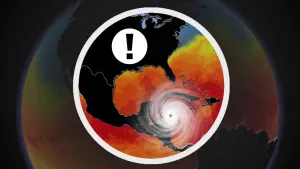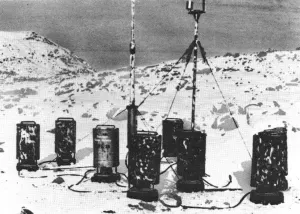
Look up! The Northern Lights may shine across Canada tonight
The arrival of a solar storm is expected to spark bright aurora displays that may be visible across the entire country.
Eyes to the sky for a chance to see the Aurora Borealis dancing across the night sky.
Overnight on Tuesday night, the Sun hurled an immense magnetic filament into space, aimed more or less directly at Earth. The eruption was captured by NASA's Solar Dynamics Observatory (SDO).
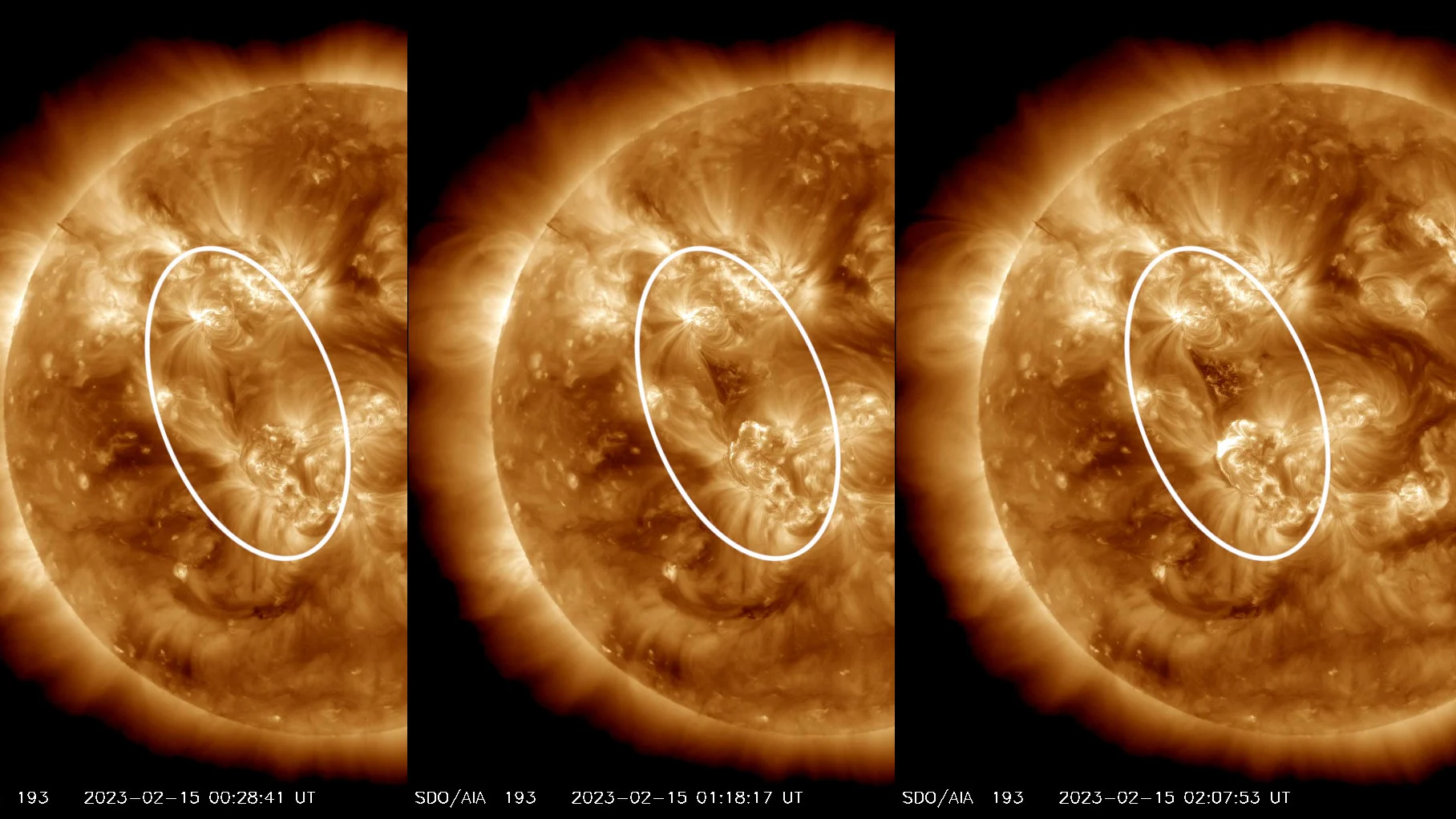
These three views of the Sun, captured between 7:28 and 9:07 p.m. EST on Tuesday, Feb. 14 (0:28-2:07 UTC Feb 15), reveal the flaring in the solar corona as this filament tore itself away from the Sun's surface (highlighted by the white ovals). Credit: NASA SDO/Scott Sutherland
The NASA/ESA Solar and Heliospheric Observatory (SOHO) also tracked the resulting solar storm (aka coronal mass ejection or CME) as it expanded away from the Sun.
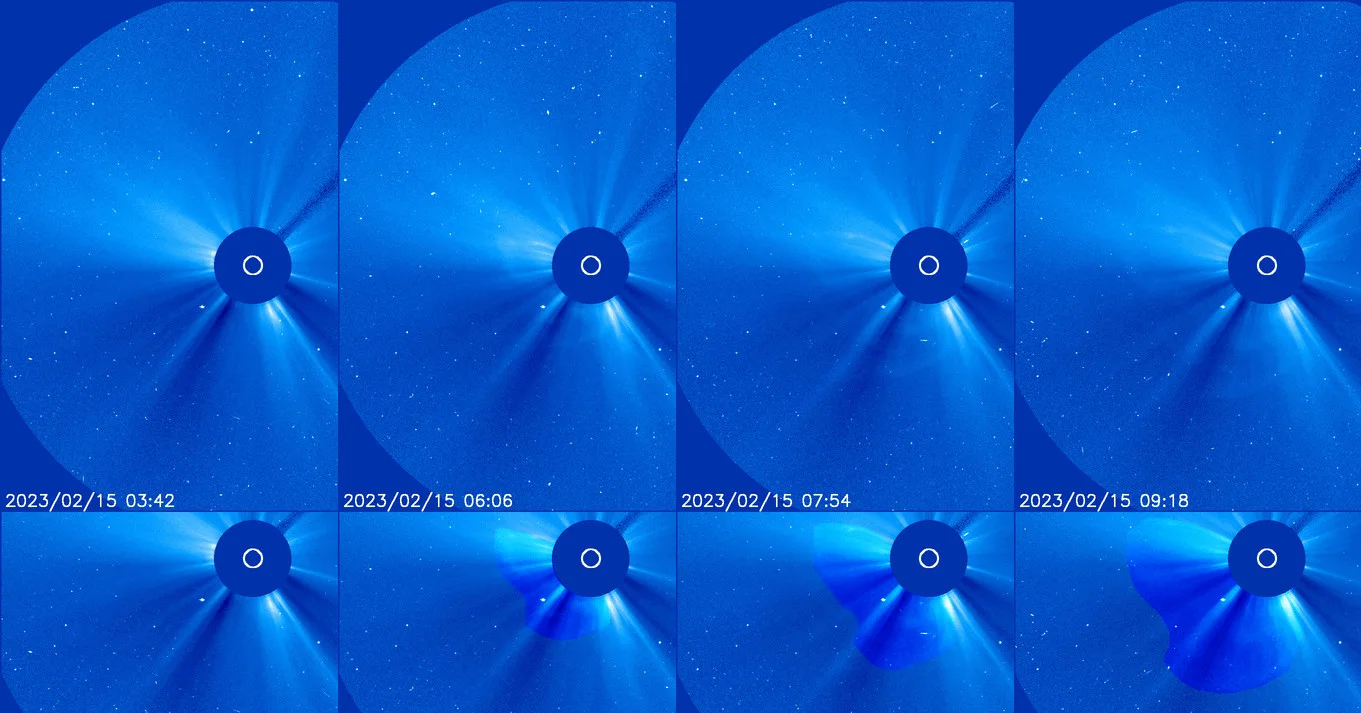
These LASCO 3 coronagraph views show the cloud of solar plasma as it expanded away from the Sun on Tuesday night and Wednesday morning. The CME has been highlighted in the bottom panels so that it stands out better against the background. Credit: NASA-ESA-SOHO/Scott Sutherland
These views were not very dramatic, at least compared to some of the solar activity we've witnessed recently.
However, the real dramatic views are expected to begin Friday night.
As some skywatchers in the Prairies have seen, there have already been some fairly active auroras on display this week.
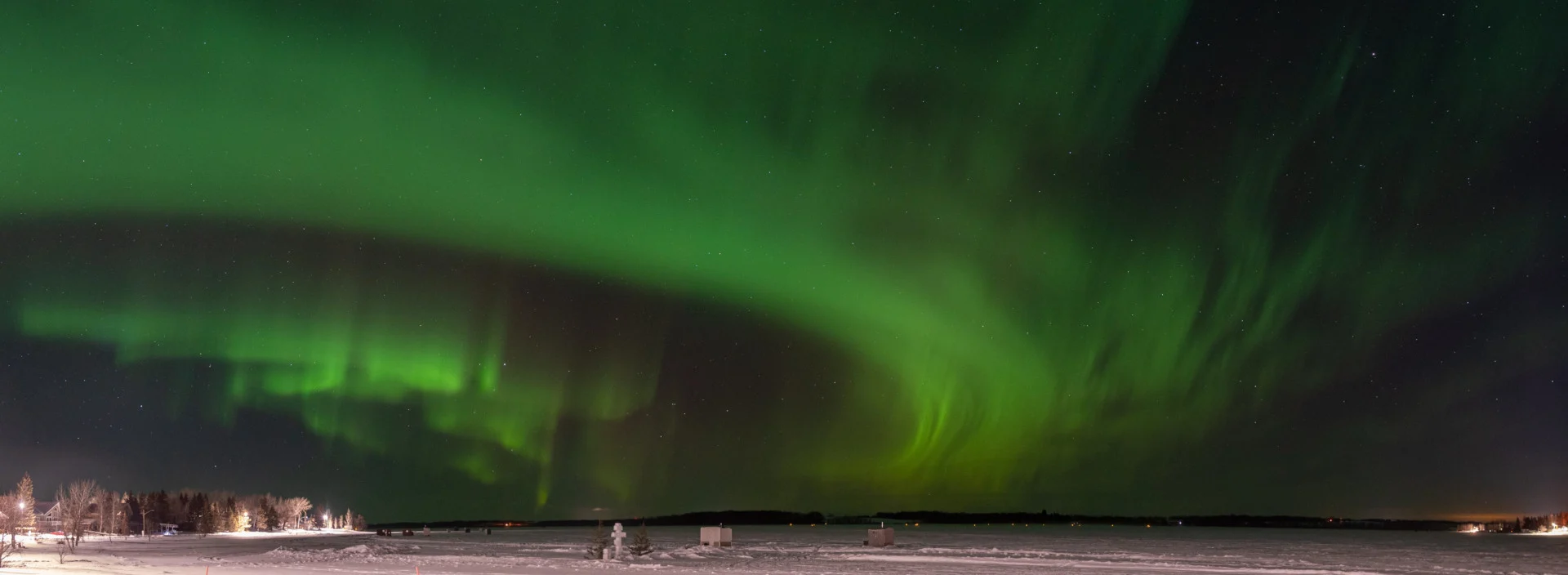
This view of the Aurora Borealis was captured from southern Manitoba on the night of February 14-15, 2023. Credit: Deb Maluk (used with permission)
According to spaceweather.com, this was due to a 'glancing blow' by a CME that erupted from the Sun on February 11 and sparked a minor geomagnetic storm as it swept past us Tuesday night.
NOAA's Space Weather Prediction Center says that when this latest solar storm reaches Earth on Friday, Feb. 17, it is expected to cause a similar disturbance — a G1 (minor) geomagnetic storm — which may ramp up into a G2 (moderate) geomagnetic storm Friday night.
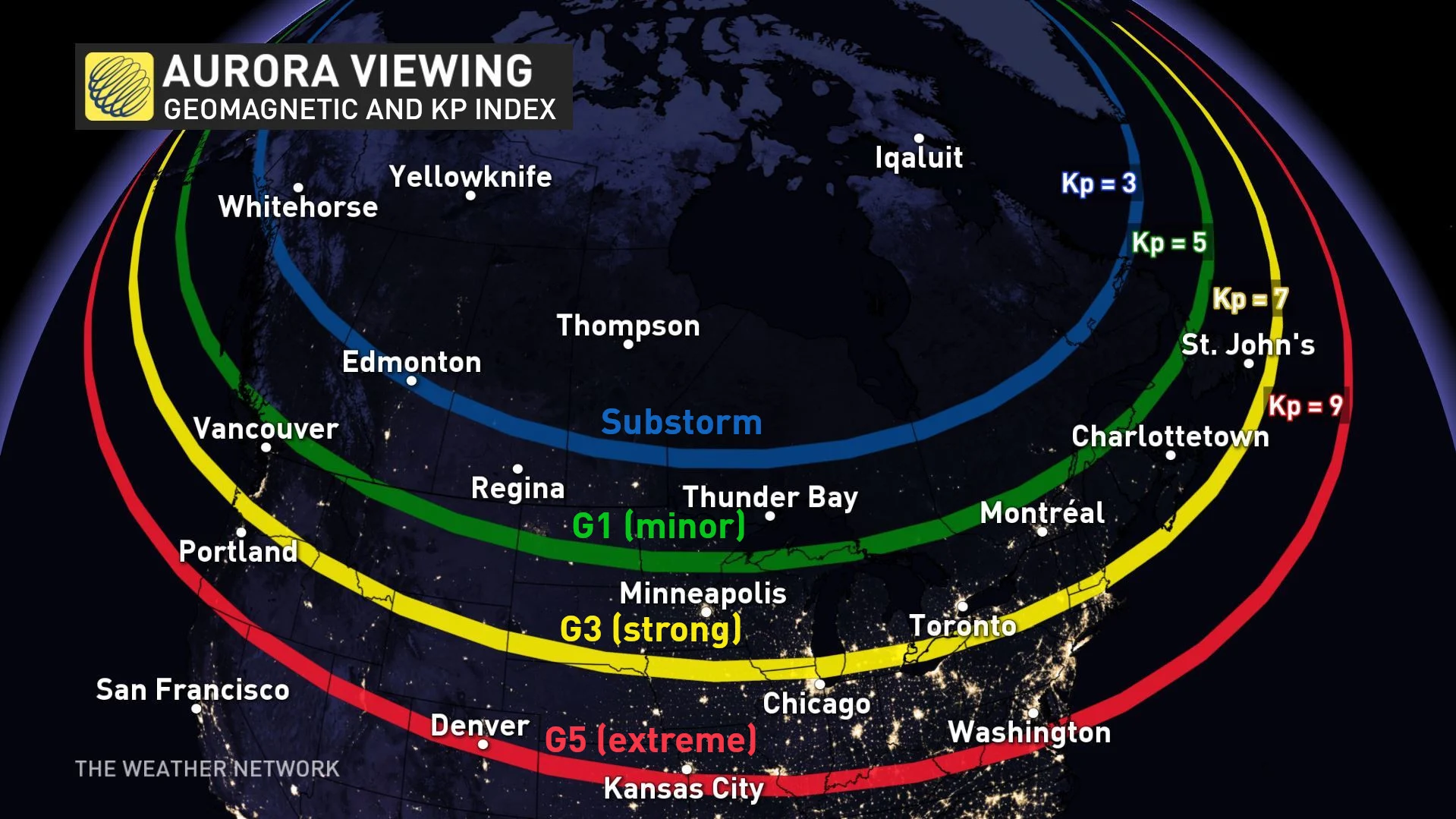
As shown in the map above, increased geomagnetic activity not only results in brighter aurora displays, the aurora 'oval' is also pushed farther south.
During a G1 geomagnetic storm, the auroras tend to be limited to northern regions of eastern Canada, although they're often seen quite clearly from the southern Prairies and southeastern British Columbia. For a G2 geomagnetic storm, nearly the entire country has a chance to see them, as the aurora oval pushes down between the green and yellow lines on the map.
Tips for aurora viewing
Aurora watching can be challenging.
At times they can put on spectacular displays overhead, bright enough to be clearly seen with the unaided eye. In other cases, you can just barely notice that they're there, and it requires long-exposure photography to draw out the details, or they can hang out just near the horizon, far to the north. Additionally, they can be anything but consistent, brightening and dimming, or even appearing and disappearing, in the blink of an eye.
Since clear skies are essential for seeing the Northern Lights, the first thing to check before going out is your local weather forecast.
Also, even the clearest skies will likely not help if you're viewing from inside a large urban centre. City light pollution affects our night vision, and thus can easily spoil the show. The best viewing potential can be found far away from urban sprawl.
Next, be patient.
Since the human eye needs time to adjust to the dark, give yourself about 20-30 minutes away from any bright lights (including smartphone screens) to start. Looking up at the stars and planets can easily make that time go by quickly. Then, turn your eyes to the north. It's possible that the auroras may not be there at first, but if you give it some time, you could see something amazing.
(Thumbnail image courtesy Deb Maluk)







